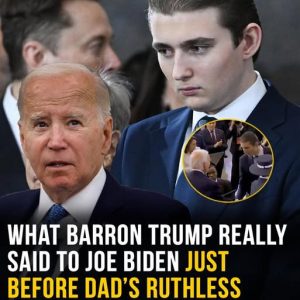David Richardson, the acting chief of the Federal Emergency Management Agency, has announced his resignation after a tenure marked by controversy, internal turmoil, and questions about his qualifications. He submitted his notice to the Department of Homeland Security, which oversees FEMA, signaling he will step down at the end of hurricane season. DHS confirmed the resignation, but multiple sources indicated the decision came amid efforts already underway to remove him. Richardson’s close alignment with Homeland Security Secretary Kristi Noem played a central role in his appointment, despite his lack of experience in emergency management. He previously led the DHS Countering Weapons of Mass Destruction office and had a background as a Marine veteran, martial arts instructor, and painter—experience far removed from FEMA’s core mission.
From early in his tenure, Richardson became a source of public controversy and internal agency distress. One particularly infamous incident involved a June meeting where he reportedly told FEMA employees he did not know the United States had a hurricane season. Though DHS later insisted the comment was meant as humor, it reinforced concerns about his preparedness for the role. These concerns were heightened by the sweeping changes Noem and DHS sought to impose on FEMA, reshaping the agency’s leadership structure by favoring political loyalists over career emergency-management professionals. The result was a leadership environment in which seasoned FEMA staff felt increasingly sidelined, while Richardson struggled to articulate or defend DHS’s reform plans.
In the wake of Richardson’s resignation, DHS announced that Karen Evans, a longtime ally of the Trump administration and newly appointed FEMA chief of staff, will succeed him on December 1. DHS thanked Richardson for his “dedicated service,” though internal accounts paint a different picture. His tenure reached a crisis point during catastrophic flooding in Texas, by far the most significant emergency FEMA faced under his leadership. During this event, Richardson was on vacation and reportedly unreachable for several hours, which raised alarms about his ability to respond in real time. He later told lawmakers that he had been monitoring the disaster from his truck and aiding coordination efforts remotely. However, his absence from public briefings and his delayed visit to the disaster zone—more than a week after the flooding—fueled criticism.
The optics of Richardson’s eventual arrival in Texas only intensified scrutiny. He appeared unannounced, wearing a straw hat and cowboy boots without any FEMA insignia, a look observers found highly unusual for the nation’s top emergency-response official during a crisis. Meanwhile, President Donald Trump and Secretary Noem had already toured the devastated area, raising further questions about Richardson’s visibility and engagement during one of FEMA’s most critical operations. Despite this, Richardson defended his actions, telling lawmakers the Texas response was a “model” for disaster management. He also claimed he accepted the role only because others declined, emphasizing that he agreed to serve for the duration of hurricane season and now felt free to depart.
Richardson’s tumultuous leadership was symptomatic of a broader shift under DHS, which had begun replacing seasoned emergency managers within FEMA with political appointees viewed as more loyal to the administration. According to officials, Richardson embodied this shift, bringing a confrontational leadership style that clashed with agency norms. On his first day, he asserted he alone spoke for the agency and warned staff he would “run right over” anyone who opposed him. Reports from within FEMA described him as unpredictable, prone to yelling, and at times openly partisan; one employee recalled him asking whether disaster funds could be allocated to Republican areas but not Democratic ones. His aversion to digital communication—barring staff from bringing phones or computers to meetings and keeping his own phone hidden—further complicated internal operations.
Over time, DHS leaders, including Noem herself, became increasingly frustrated with Richardson’s inability to communicate effectively about FEMA’s evolving mission and reforms. He was eventually barred from speaking at conventions and from leading hurricane-awareness campaigns, actions that signaled a profound loss of confidence. One official told CNN that Richardson did “more damage than good” when speaking publicly. His authority continued to erode as DHS reassigned his closest allies and installed senior officials who further limited his influence. By the final months of his tenure, Richardson was effectively sidelined, remaining in place largely as a placeholder until hurricane season concluded.
Richardson’s departure marks the end of a tenure that many within FEMA viewed as chaotic and harmful to the agency’s stability. His predecessor, Cameron Hamilton, himself a Trump appointee, criticized Richardson as “unprofessional and overwhelmed” and suggested he never should have been placed in the role. Now, as DHS prepares substantial changes to FEMA’s structure and mission, Richardson’s exit signals the beginning of a new period of transition—one that leaves many questions about the agency’s future direction, leadership priorities, and ability to respond effectively to national emergencies.





